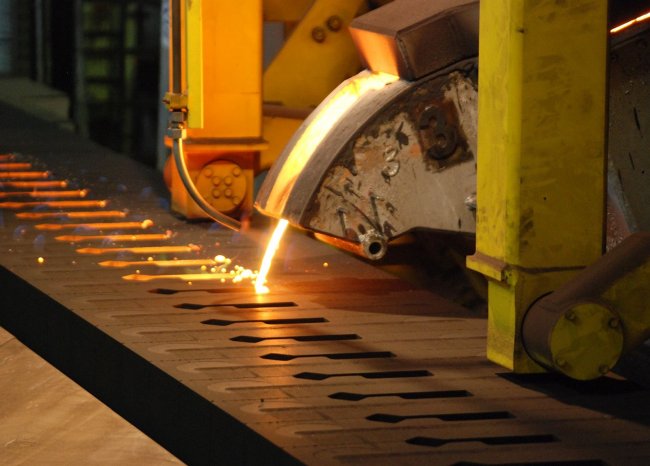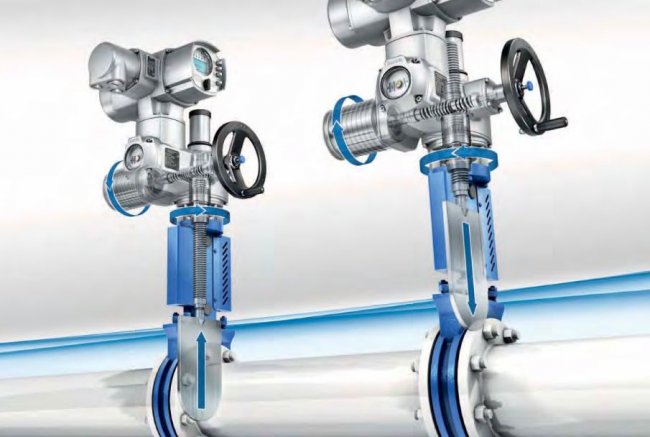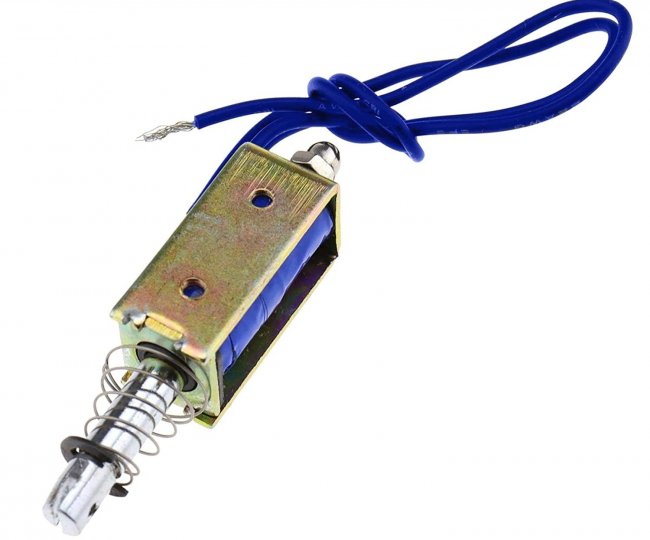Actuators in foundry automation systems
Actuators in automatic process control systems are designed to directly affect the controlled object or its controls.
Requirements
Drives must meet the following requirements:
-
have as linear static characteristics as possible;
-
have sufficient power to set the control object or its organs in motion in all modes of operation;
-
have the required performance;
-
to ensure the simplest and most economical regulation of the production value;
-
have low steering power.
Features when working in foundries
Automation systems for foundry processes are characterized by the presence of two control modes: remote and automatic.
For drives in remote control systems, the main indicators are energy, in addition, operational, structural and economic characteristics are required.
For drives in automatic control systems, the most important are their static and dynamic properties, which affect the stability and quality of regulation. These characteristics of the choice of actuators in automation systems for casting processes must be taken into account in their design.
The main energy parameters of drives (remote control) are the nominal torque (the force developed at the nominal control) and the starting torque (the force developed at the moment of switching on under the action of the nominal control signal).
The ratio of the starting torque to the reduced moment of inertia of the drive determines its inertia, that is, the time from the start of movement to the nominal speed of movement of the output element in a steady state. To reduce the acceleration time, the starting torque should not exceed 2 — 2.5 rated torque.
In positional control systems where the control action has two setpoints, the actuators must provide the ability to change the control action from the maximum value.
In systems with constant speed regulators, the control action on the object is determined by the time of movement of the regulating body, the permutation speed of which depends on the technical data of the actuators.
In proportional control systems, the control action on the object is proportional to the deviation of the parameter from the set value, and the proportionality factor depends on the design of the actuator, braking devices and after trip after trip.
In a number of automatic control systems for foundry processes, the actuators are covered by feedback on the position of the regulator. An advanced evaluation of the static and dynamic properties of the drives is carried out considering their accuracy and speed.
When designing actuators, it is necessary to set the speed of movement of its output device at nominal load and a control signal corresponding to the nominal speed of movement of the output device.
A wide variety of actuators are used in foundry automation systems. By design, they are divided into electromechanical, electromagnetic, hydraulic, pneumatic and combined.
Electromechanical drives
Electromechanical drives are used to control various stopping and regulating working bodies of automation systems. Kits may include an electric motor, gearbox, limit switches, torque limiting clutch and feedback sensor.
Electromechanical drives include devices for turning buckets for automatic pouring, opening and closing of hoppers for weighing dispensers in mixing and mixing systems, charging smelters, etc.
In these casting processes, electromechanical drives provide:
-
remote or automatic start of the electric drive using the "Close" and "Open" start buttons;
-
stopping the electric drive in any intermediate position by means of buttons or contacts of limit switches;
-
emergency shutdown in case of critical overloads;
-
remote light signaling of the end positions of the working body (elevator, bottom of the hopper, pouring ladle, etc.;
-
electrical blocking by other mechanisms.
Electromagnetic drives
Electromagnetic drives are a combination of an electromagnet with a mechanical device moved by it. They impart forward motion to the drive of the controlled organ.
Electromagnetic actuators are used to control valves, gates, valves and spools in automation systems for regulating the supply of dome jets, heating, oxygen supply in the steelmaking process, in systems using electro-hydraulic or electro-pneumatic devices, in which the solenoid moves the control valve, etc.
The disadvantage of solenoid valves and valves is that with almost instantaneous switching, water hammer can occur.
Hydraulic drives
Hydraulic actuators are widely used in automatic casting lines and systems due to the fact that they allow significant short-term actions of 5 - 7 times overloads, have large output moments (forces) at small sizes and can provide angular accelerations in excess of 20,000 rad / s .
The most widely used hydraulic piston drives, where petroleum oils, synthetic fluids, alcohol-glycerine mixture, etc. are used as the working fluid.
In casting systems, the most commonly used piston drives are single and double acting.
The disadvantages of hydraulic drives include their large mass, significant power consumption for control and difficulties in eliminating accidents.
In order to correct some of the main shortcomings, the selection of the braking method and law and the calculation of the design parameters of the braking devices of the hydraulic cylinders used in the foundry are of particular importance.
The choice of certain hydraulic cylinders and brake devices is determined by the way they work. At low speeds, it is permissible to use driving hydraulic cylinders without braking devices with braking of the moving parts of structures or equipment against the limiter. When the working speed increases to 80 mm / s, it is necessary to use braking devices.
Pneumatic drives
Pneumatic drives construction in the same way as hydraulic. Their differences lie in the properties of the working medium (gas and liquid). The compressibility of the gas has a negative effect on the operation of the system, especially under significant loads and accelerations.
Pneumatic drives are divided into piston and diaphragm. Pneumatic piston actuators are common in foundry due to their simplicity and low cost.
At the same time, the aggressive environment in casting processes forces designers to develop special pneumatic cylinders for automatic casting machines. Such pneumatic cylinders are manufactured in a closed design where their rods do not come into contact with the environment.
They use one-way cylinders connected by a single rack to a gear on the output shaft. The rotation of the shaft is converted by the crank into linear motion, and although the double conversion results in a loss of power, these mechanisms are durable.
Combined actuators
The new devices from Festo allow you to solve tasks with simple motorized movements and intelligently exchange data from a controller to a PLC via IO-Link. This series of electric drives combines the simplicity of pneumatics with the advantages of electric automation.
The electric drives of the Simplified Motion series are motion solutions with integrated motorization and control for simple tasks. They allow you to operate and commission without software, on the "plug and play" principle.
Parameters for feed and return speed, actuation force, end position setting, damping and manual control can be set directly on the drive using physical buttons.
Choice
When choosing actuators for foundry automation systems, consider their speed, efficiency, quiet operation. Each of these metrics, to one degree or another, can be important to solving a particular automation problem.
However, there is one main criterion that should be preferred in the design or selection of any actuator — that is high reliability.
In this regard, it is recommended to use more widely, whenever possible, electromagnetic and electromechanical drives with simple kinematic schemes.
In cases where hydraulic or pneumatic drives are used, attention must be paid to the reliability of the sealing devices and to the reduction of the mass of the moving parts.
See also: Technical means of measurement and control in foundry








